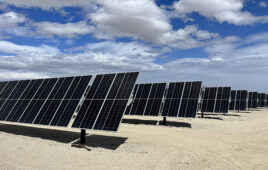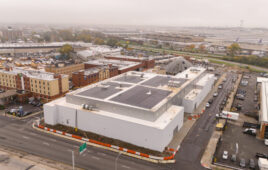TotalEnergies and Schneider Electric have started construction on a 2-MW solar microgrid system with a 1.25-MW battery energy storage system in California. Once construction has been completed, the solar microgrid will be integrated with the new Rockwell/Allen Bradley distributed control system (DCS) at natural gas producer Aemetis‘ Advanced Fuels biorefinery in Keyes.
Foundations for the solar array are now under construction, with project completion expected in Q2 2023. TotalEnergies serves as the project’s PV supplier as well as the engineering, procurement and construction (EPC) contractor.
“The microgrid creates energy resiliency and will assist with off-peak load shedding and energy efficiency,” said Eric McAfee, chairman and CEO of Aemetis. “This microgrid, along with other energy-saving technologies being implemented at our low-carbon ethanol facility, will further reduce the carbon intensity score of the fuel ethanol produced.”
The AI-enabled control system will run on virtualized servers, reducing the amount of computer hardware by 80%, which will require less power to operate than traditional systems. The virtual environment will also help reduce planned and unplanned downtime.
News item from Aemetis





“Once construction has been completed, the solar microgrid will be integrated with the new Rockwell/Allen Bradley distributed control system (DCS) at natural gas producer Aemetis‘ Advanced Fuels biorefinery in Keyes.”
Hello people, even the fossil fuel industry sees that reducing or eliminating the middleman in the energy requirement saves one money. Doesn’t necessarily mean this company will pass along lower prices to consumers of the refined products, but Aemetis will enjoy lower reoccurring costs in energy to produce their products by using solar PV and smart ESS.
“The AI-enabled control system will run on virtualized servers, reducing the amount of computer hardware by 80%, which will require less power to operate than traditional systems. The virtual environment will also help reduce planned and unplanned downtime.”
Interesting (claim), this leaves 20% of the operations that may well be porous to DDoS attacks or direct destruction of field site infrastructure that could take weeks or months to repair or replace. Has anyone asked at Ametis just where these (virtualized servers) are sited? EVERY design has pros and cons, with weaknesses and strengths. Giving one’s operation over to (virtual) partners is not a sign of competent security understanding.